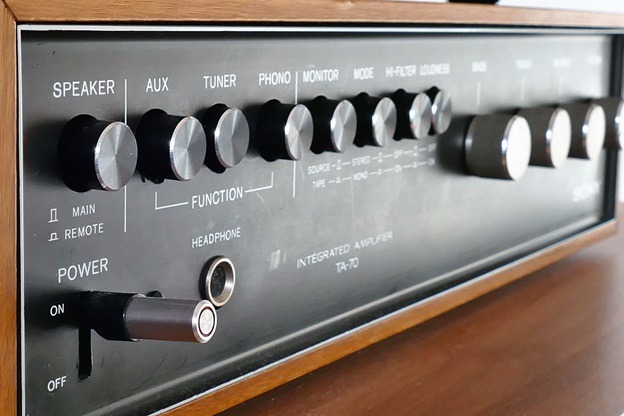You may be wondering what the difference between a car stereo and a home stereo is? Perps you want to use your car stereo in your home or vice versa.
So, in this post, we’ll take a look at some of the key differences and what you need to know.
Car stereos and home stereos are not interchangeable. You can’t just grab an awesome home stereo and stick it in your vehicle. It won’t work.
This is because there are a few differences between car stereos and home stereos.
1. They Are Designed For Different Power Systems
A pretty simple one here.
Home stereos are designed to be run off a power supply in your home. This will be either 110-volt or 230-volt, depending on where you live.
You, of course, don’t have that sort of power running through your vehicle. This means that car stereos are designed to work on 12-14-volts.
If you tried to plug a car stereo into your home power supply without using some sort of step-down converter, then it would probably be fried. If you tried to plug a home stereo into your car, it just wouldn’t work.
2. Car Stereo Speakers Are Lower Resistance
Car stereo speakers tend to have a lower resistance, this is due to the lower amount of power. Most car stereo speakers will cap out at 4 ohms, while the vast majority of speakers that you find around your home will start at 8 ohms.
We could probably talk for hours about resistance in speakers. However, all you really need to know at this point is that ohms impacts sound levels. 8 ohms speakers will be louder than 4 ohms speakers. Therefore, your home stereo speakers will get louder.
Honestly, this part is not too much of a problem. Vehicles are small. You really, really do not want to be blasting something top volume in there. It will hurt the ears of people inside of the vehicle, and it will annoy those outside of the vehicle.
3. Car Stereo Speakers Tend To Be Passive Speakers, Particularly Subwoofers
Car stereo systems need to take up less space. As a result, most speakers tend to be passive. This means that they do not have their own amplifier, but they will rely on a connected amplifier. Most speakers in a home will be active speakers.
This does result in the sound coming from car stereo speakers to feel a little bit different. This is especially true when you have subwoofers. The bass on passive speakers doesn’t feel quite so heavy.
That being said, this isn’t that much of a constraint. You can get active speakers in vehicles. They do require a bit more power, and they take up a whole lot more space.
4. Car Stereo Speakers Take Up Less Space
Pretty obvious this one. A car stereo only has a small amount of space to fit in. Everything is going to be smaller about it. Don’t expect the same sound quality coming from your typical car stereo system as you would get in a stereo system in your home.
They’ll also typically take up less space in your bank account, as an average car stereo is $150; however, home stereos usually go for much more, especially if you’re looking to have music in every room of the house.
5. Car Stereo Speakers Are Designed For Extreme Conditions
The conditions in your home are fairly predictable. It gets hot and cold, of course. However, the range of temperatures is never going to be that crazy.
This is completely different to vehicles. In bright sunlight, the inside of the vehicle can get incredibly hot. When it is cold, the temperature can plummet.
When you drive your vehicle, the car stereo system is going to be bouncing up and down too.
A car stereo needs to put up with a whole lot more than a home stereo system. As a result, they tend to be more robust.
Conclusion
As you can see, there are a lot of differences between car stereo systems and home stereo systems. Remember, they are not interchangeable.
Only ever use a system designed for vehicles inside of your vehicle.

